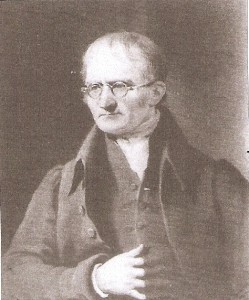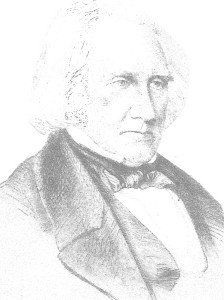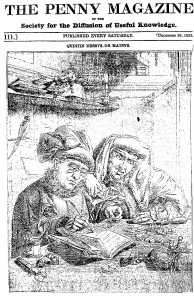All areas of human activity create and develop their own specialist language. The area of education and training is no exception to this rule and acronyms, abbreviations and special terms abound. The list below attempts to provide a reference of terms used in post-16 education and training as well as terms associated with schools and Higher Education. Although many of the terms are historical they still appear in many documents. This fourth version of the glossary hopefully will cross reference with the history of technical and vocational education, the history of technical and commercial examinations and the chronology. The list cannot hope to be perfectly accurate or complete but should provide a guide to the terminology, new organisations and initiatives that come and go with increasing rapidity but hopefully the list will be of use to the readership.
Update July 2017
A
A Advanced level (GCE).
AA Advanced Apprenticeship
AACE Army Certificate in Education
AACS Adult Advancement and Careers Service
AAD Advanced Apprenticeship Diploma
AAI Association of Art Institutions
AAP Assessment of Achievement Programme
A1 First Year of Advanced Level Study 2000+
A2 Second Year of Advanced Level Study 2000+
AB Awarding Body
ABC Awarding Body Consortium
ABCM Association of British Chemical Manufacturers’ founded in 1916.
ACC Association Chambers of Commerce
ACCA Qualifications Curriculum and Assessment Authority for Wales 1997+.
ACE Association of Consulting Engineers.
AEA Advanced Extension Awards first examinations in 2002
AEB Associated Examining Board (‘A’ and ‘O’ levels)
AD Advanced Diploma
AFE Advanced FE level 3 i.e. more than ‘A’ levels
aMA Accelerated Modern Apprenticeship
ALIS ‘A’ Level Information Service – an attempt to assess value added
ALL Advanced Learning Loans
AMA Advanced Modern Apprenticeship
AoN Application of Number
AOs Awarding Organisations
APEL/APL Accreditation of Prior Education (Experience) and Learning/Accreditation of Prior Learning
APU Assessment of Performance Unit established in 1965
AQA Assessment and Qualifications Alliance
AQAC Accreditation and Quality Assurance Committee
ARC Agriculture Research Council
AS Advanced Subsidiary (Originally called Advanced Supplementary which started in 1987) offered from 2000
ASC Agricultural Secretaries Certificate (Scotland).
ASDAN Award Scheme Development and Accreditation Network
ASE Amalagmated Society of Engineers
ASET Association for Sandwich Education and Training
ASET Accreditation Syndicate for Education and Training
AST Advanced Skills Teacher
ATI Association of Technical Institutions
ATC/D Art Teacher’s Certificate/Diploma
AVCE Advanced Vocational Certificate of Education – vocational ‘A’ levels. replaced Advanced GNVQs in 2000
B
BA Bachelor of Arts
BB British Baccalaureate
BEC Business Education Council – 1974-1983
BEC British Employers Federation
BEng Bachelor of Engineering
BERA British Educational Research Association
BERR Department of Business, Education and Regulation/Regulatory
BESE Board of Education Science Examination
BIM British Institute of Management
BIS Business Innovation and Skills
B-IT Business-Implementation Techniques
BJET British Journal of Education Technology
BoE Board of Education (1899-1944)
BS Basic Skills
BSc Bachelor of Science
BSc (Econ) Bachelor of Science (Economics)
BTC British Training and Enterprise Council
BTEC Business Technician Education Council (TEC + BEC) – 1983-1996
BVQR Board for Vocational Qualifications Reform
C
C 1, C2 The first two years of a craft course
CA Credit Accumulation
CAC Central Advisory Council
CACE Central Council For Education
CAC (W) Central Advisory Council (Wales)
CAEL Council for Adult and Experiential Learning
CAI Computer Aided Instruction
CBA Certificate in Business Administration (Scotland).
CC’s Commercial Certificates
CCA Credit Common Accord
CCEA Northern Ireland Council for Curriculum Examinations and Assessment
CCW Curriculum Council for Wales
cea curriculum, examinations and assessment
CEE Certificate of Extended Studies
CEBR Centre for Economics and Business Research
CEF European Common Framework
CEI Council of Engineering Institutions
CELP College Employer Links Project
Cert Ed Certificate of Education
CERI Centre for Educational Research and Innovation
CEng Chartered Engineer
CFE Certificate of FE (Various stages e.g. 1,2 and 3)
CFEs Colleges of Further Education
CFE/T Certificate of FE/Teaching
CfL Campaign for Learning
CGLI City and Guilds of London Institute
CI Central Institutions
CIE University of Cambridge International Examinations
CIF Common Inspection Framework
CIS Chartered Institute of Secretaries
CITB Construction Industry Training Board
CMS Certificate of Management Studies
CNAA Council for National Academic Awards 1964/5 – 1992
COAD Centre for Optimal Adult Development
CoID Council of Industrial Design
CoP/CP College of Preceptors
COS Certificate of Office Studies
CoT College of Technology
CPhy Chartered Physicist
CPD Continuous Professional Development
CPF City Parochial Foundation
CPVE Certificate of Pre-Vocational Education 1983-1991 – replaced by the DVE in 1991
CREST Creativity in Science and Technology – to promote links between education and science and technology in industry
CREDIS Credit Framework (Wales)
CRMP Certificate in Retail Management Principles
CS Core Skills
C Sci T Chartered Science Teacher
CSA Council for the RSA
CSE Certificate of Secondary Education introduced in 1965. Ceased1986/87
CSYS Certificate of Sixth Year Studies
CT Credit Transfer
CTC Central Training Council
CTEB Council of Technical Examining Bodies – comprised of CGLI and 6 REBs
C2k Curriculum 2000.
CUC Coal Utilisation Council.
CULE Cambridge University Local Examinations.
CVU Council of Validating Universities.
D
DA Diploma in Art
DAB Diploma Awarding Body
DAB Diploma Development Board
DAE Diploma in Advanced Engineering
DAS Diploma Aggregation Service
DAuE Diploma in Automobile Engineering
DATEC The Art and Design Committee of TEC – 1977-83
DCAe Diploma in Aeronautics (of the College of Aeronautics – Cranfield)
DCE Diploma of Continuing Education
DCSF Department for Children Schools and Families (2007-2010)
DENI Department of Education for Northern Ireland
DES Department of Education and Science (1964-1992)
DDPs Diploma Development Partnerships
DfE Department of Education (1992-1995)
DfEE Department of Education and Employment (1995-2001)
DfES Department for Education and Skills (2001-2007)
DFE Department for Education (2010+)
Dip AD Diploma in Art and Design
Dip HE Diploma in Higher Education from 1974 HE award equivalent to the first two years of an integrated degree course
Dip Tech Diploma in Technology
Dip Tech (Eng) Diploma in Technology (Engineering)
DIUS Department for Innovation, Universities and Skills
DMS Diploma in Management Studies
DoE Department of Employment
DoE Department of Education
DoPA Department of Practical Art
DoSA Department of Science and Art
DoT Department of Technology
DPSE Diploma in Professional Studies in Education
DSA Department of Science and Art
DTI Department of Trade and Industry
DUB Durham University Board
DVE Diploma of Vocational Education replaced CPVE in 1991
DWP Department of Work and Pensions
E
E 1, 2 & 3 Entry levels 1,2 and 3
EA Education Act
EAB Examinations Appeals Board
EAEB East Anglian Examinations Board (CSE)
EAL English as an Additional Language
EARACFE East Anglian Regional Advisory Council for FE
EAV Examining and Validating
EB English Baccalaureate
EB European Baccalaureate
EBC E Bacc Certificate
EBCs English Baccalaureate Certificates
ECDL European Computer Driving Licence
ECITB Engineering Construction Industry Training Board
ECTS European Credit Transfer System
ED Employment Department
ED Education Department
Ed Dep/ED Education Department (1856-1899)
Edexcel Awarding body formed by merger of BTEC and ULEAC in 1996
EfG Engineering for Growth
EDSU Examination Delivery Support Unit
EIGA Engineering Industry Group Apprenticeships (1953+)
EIS Educational Institute of Scotland
EITB Engineering Industry Training Board
EJEB Engineering Joint Examination Board – comprised Institutions of Civil, Mechanical, Electrical, Municipal, Marine Engineers, Royal Aeronautical Society and the Institution of Structural Engineers for the purposes of examining candidates for studentship or other grades of the respective institutions
EL Entry Level
ELD Entry Level Diploma
ELWa Education and Learning Wales
EMEU East Midlands Educational Union
EMFEC East Midlands FE Council
EMREB East Midlands Region Examinations Board (CSE)
E 1,2 and 3 Entry levels 1, 2 and 3
EMTA Engineering Marine Training Authority
Eng Tech Engineering Technician
EQF European Qualifications Framework
EQCF European Qualifications and Credit Framework
ERDF European Regional Development Fund
ESB Employer Skills Board
ESIW Essential Skills in the Workplace
E2E Entry to Employment
ET Education Training
ET Education and Training
ETC Elementary Technical Course
ETDU Examinations Techniques Development Unit
EV External Verification/Verifier
EVB Examining and Validating Bodies
F
FAB Federation of Awarding Bodies from 2001
FBI Federation of British Industries (Now the CBI).
FCEC Federation of Civil Engineers Contractors founded in 1919.
FD Foundation Diploma.
FD Foundation Degree from 2001.
FDA Foundation Degree in Arts.
FDF Foundation Degree Forward.
FDG Foundation Degree Group.
FDS Foundation Degree in Science
FDs Foundation Diplomas
FDTF Foundation Degree Task Force
FE Further Education
FECs FEColleges
FES FE Sector
FES24 FE and Skills 24
FFORWM National Organisation for FE Colleges in Wales
FL Foundation Learning
FLT Foundation Learning Tier
FM Functional Mathematics
FMA Foundation Modern Apprenticeship
FSs Functional Skills
FSMQ Free Standing Mathematics Qualifications
FSMUs Free Standing Mathematics Units
FT Foundation Tier
FTC Full Technological Certificate awarded by CGLI
G
G General Course
G 1, G2 First two years of a part-time general preliminary diagnostic course at a FE college
G* One-year part-time general preliminary diagnostic course at a college
GA Graduate Apprenticeship
GCE General Certificate of Education from 19511986/87 replaced by GCSEs
GCs Group Certificates
G-CC Grouped-Course Certificate
GCSE General Certificate of Secondary Education
GEC General Education Course
GNVQ General National Vocational Qualification 1991
GRIC Graduateship/Graduate of the Royal Institute of Chemistry
GSVQ General Scottish Vocational Qualification
H
H Higher grade of the Scottish leaving certificate
HCOS Higher Certificate in Office Studies
HNC/HND Higher National Diploma/Certificate 1921+
HD Higher Diploma
HFE Higher and Further Education
HMIs Her Majesty Inspectors
HSLC Higher School Leaving Certificate
HT Higher Tier
HTB Hairdressing Training Board
HTC Higher technical Certificate
HTD Higher Technical Diploma
I
IBacc/Int Bacc International Baccalaureate
IBD International Baccalaureate Diploma
IC Intermediate Certificate (CGLI)
ICAAE International Curriculum and Assessment Agency for Examinations
ICAC Intermediate Certificate in Art and Crafts
ICWA Institute of Cost and Works Accountants
ID Intermediate Diploma
IEE Intermediate Engineering Examination
IEng Incorporated Engineer
IEQs International English Qualifications
IIA Institute of Industrial Administration – offered certificate in Foremanship and Works Supervision
IIS Institute of Industrial Studies
IML Institute of Leadership and Management – formed by the merger of NEBSM and ISM in 2002
ILAs Individual Learning Accounts
ILP Individual Learning Plan
IOM Institute of Office Management
ISM Institute of Supervision and Management
ITB Industrial Training Board
ITC Industrial Training Council
ITOs Industrial Training Organisations
ITQ Information Technology Qualification
IVQs International Vocational Qualifications
J
JACQA Joint Advisory Committee for Qualifications Approval
J1, J2 Prior to 1944 the two years in a junior technical school before entering a senior course in a college
JBPVE Joint Board for Pre-Vocational Qualifications
JC Joint Committee
JCC Junior Commercial Certificate
JCS Junior Commercial School
JCGQ Joint Council for General Qualifications established in 1999 comprising AQA. Edexcel. OCR. CCEA (NI). WJEC (Wales)
JCQ Joint Council for Qualifications
JMB Joint Matriculation Board
JTS Joint Technical Scheme
JTS Junior Technical School
K
KS Key Skills
KSA Key Skills Assessment
KS 1/2/3/4 Key Stages in National Curriculum
KSSP Key Skills Support Programme
L
LA Local Authority
LBs Lead Bodies
LCC London Chamber of Commerce started examinations in 1890
LCCI/LCCIEB London Chamber of Commerce and Industry Examinations Board 1890+
LEA Local Education Authority
LEAEG London and East Anglian Examining Group (GCSE + CSE examinations)
LHCRACTE London and Home Counties Regional Advisory Council for Technological Education
LIBs Lead Industry bodies
LME London Matriculation Examinations
LNE Literacy,Numeracy and ESOL
LPC London Polytechnic Council
LREB London Region Examination Board
LSIS Learning and Improvement Service
LUEs London University Examinations
LUIs London Union of Institutions
M
MA Modern Apprenticeship from 1995 – Foundation (FMA)/Advanced (AMA)
MAAC Modern Apprenticeship Advisory Committee – 2001+
MaST Mathematics Specialist Teacher
MC Matriculation Certificate
MCT Membership of the College of Technologists taken over by CNAA
MEnt Master of Enterprise
ME/MEng Master of Engineering
MEG Midlands Examining Group (GCSE + CSE examinations)
MLE Main Learning Element
MoE Ministry of Education (1944-1964)
MoL Ministry of Labour
MoT Ministry of Technology
MSc (Eng) Master of Science (Engineering)
MTL Masters in Teaching and Learning
MTech Master of Technology
N
NAA National Assessment Board
NABCE Non award Bearing Continuing Education
NABTEB National Business and Technical Examination Board
NAC National Apprenticeship Council
NACAE National Advisory Council on Art Education
NACEIC National Advisory Council on Education for Industry and Commerce
NAFE Non Advanced FE – up to level 3 i.e. ‘A’ level
NAS National Apprentice Scheme
NAW National Assembly of Wales
NBD National Bakery Diploma
NC National Certificate from 1921 Joint Committees replaced by BTEC awards
NC National Curriculum
NC/DA National Certificate/Diploma in Agriculture
NCBS National Certificate in Business Studies
NCC National Curriculum Council 1988-93
NCDAD National Council for Diplomas in Art and Design – established in 1961
NCETW National Council for Education and Training in Wales (ELWa)
NCF National Curriculum Framework
NCFE Northern Council for FE
NC/DH National Certificate/Diploma in Horticulture
NCITO National Council of Industry Training Organisations
NCS National Certificate Scheme
NCs National Certificates
NCTA National Council for Technological Awards
NCTEC Northern Counties Technical Examinations Council
NCVQ National Council for Vocational Qualifications 1987-97
NCWE National Council for Work Experience
ND New Deal
NDA National Diploma in Agriculture
ND National Diploma from 1921 Joint Committees replaced by BTEC awards
NDD National Diploma in Design
NDS National Diploma Scheme
NEA Northern Examining Association (GCSE + CSE examinations)
NEB National Examination Board (Shorter title for NEBAHAI)
NEBAHAI National Examination Board for Agriculture, Horticulture and Allied Industries
NEBOSH National Examinations Board in Occupational Safety and Health
NEBSM National Examinations Board for Supervisory and Management
NEBSS National Examination Board in Supervisory Studies – established in 1964
NGfL National Grid for Learning
NICCEA Northern Ireland Council for the Curriculum, Examinations and Assessment
NIG NAFE Implementation Group
NIHEC Northern Ireland HE Council
NISEC Northern Ireland Secondary Examinations Council
NISVQ National Information System for Vocational Qualifications
NNEB Nursery Nurses Examination Board
NOC National Occupational Standards
NOCN National Open College Network
NPS National Preferred Scheme
NPTC National Proficiency Test Council
NQAI National Qualifications Authority of Ireland
NQF National Qualifications Framework
NR National Route
NRA National Record of Achievement 1991+
NRDC National Retail Distribution Certificate
NRCVQ Network of National Resources Centres for Vocational Guidance
NREB Northern Region Examinations Board
NROVA National Record of Vocational Achievement 1988+
NSEAD National Society for Education in Art and Design
NSLC Natural Science Learning Centre
NSTF National Skills task Force established in 1998
NTA National Training Award
NUJMB Northern Universities Joint Matriculation Board
NVG National Consultative Group for Co-ordination of Validation Arrangements in Agriculture and Related Subjects
NVQs National Vocational Qualifications 1988+
NWREB North West Regional Examinations Board (CSE)
O
‘O’ Ordinary level
O1, O2 First two years of an ONC course
Ofqual Office of Qualifications
OC Open College – established in 1987 by the DTI
OD1, OD2 First two years of an OND course
OCR Oxford Cambridge and Royal Society of Arts from 1998
OCEAC Oxford Cambridge Examinations and Assessment Council
OFSTED Office for Standards in Education established in 1992 later titled Office for Standards in Education
OCSEC Oxford and Cambridge Schools Examinations Council (O and A levels)
OD Open Diplomas
ODLE Oxford Delegacy of Local Examinations
Ofqual Regulator for qualifications, examinations and assessments in England and for vocational qualifications in Northern Ireland
OND/Cs Ordinary National Diplomas/Certificates from 1921 Joint Committees
1-2-1 Careers advice replaced by Jobseeker Plus 1994-1998
Op 1, Op 2 First two years of an operatives course
Open College Established by the DTI in 1987
Open Tech 1982-87 a relatively short lived project
OT Other Training – other training not leading to NVQ qualifications
OU Open University 1969 first students in 1971
OUDE Oxford University Department of Education
P
P1, P2 First two years on preliminary course
PCC Preliminary Craft Course (Pre-Craft Certificate)
PCE Professional Certificate in Education
PE Pitman Examinations
PEI Pitman Examination Institute
PGCE Post Graduate Certificate in Education
PIs Performance Indicators
PL Principal Learning
PNC Preliminary National Course (Pre-National Certificate)
POS Programme of Study
PRA Professional Recognition Award
PSC Pre-Senior Course
PST Pre-Senior Course
PST Preliminary Senior Technical Course. (Evening Institute)
PTC Preliminary Technical Course offered by REBs (Pre-technical Certificate)
Q
QAA Quality Assurance Agency
QCA Qualifications and Curriculum Authority 1997+- merger of NCVQ and SCAA.
QCDA Qualifications and Curriculum Development Agency
QCF Qualifications and Credit Framework
QIA Quality Improvement Agency
QNCA Qualifications and National Curriculum Authority (Original title of QCA)
R
RAA Royal Academy of Arts
RACs Regional Advisory Councils
RACOFEEM Regional Advisory Council for the Organisation of Further Education in the East Midlands
RCB Regional Curriculum Board
RCT Royal College of Technologists/Technology
RDAs Regional Development Agencies
REBs Regional Examinations Boards/Bodies
REPLAN DES programme to provide better opportunities for unemployed adults – 1984-1991
REUs Regional Examining Unions
RMC Regional Management Centre
RMCA Regional Management Centre Association
RoA Record of Achievement
RoC Rules of Combination
RRQs The Register of Regulated Qualifications
RSA (Royal) Society of Arts founded in 1754
RDA Regional Development Agency
RSPs Regional Skills Partnerships
RtA Route to Achievement
RTJC Retail Trade Junior Certificate
RVQ Review of Vocational Qualifications 1986
RVQs Related Vocational Qualifications
RWE Realistic Working Environments
S
S1, S2 Prior to 1944 the first two years of a senior course in Scotland
SA Student Apprenticeship
SAD Science and Art Department
SANCAD Scottish Association for National Certificates and Diplomas – established in 1962
SAR Self Assessment Report
SASE Specification of Apprenticeship Standards for Employers
SATs Standard Assessment Tests
SC School Certificate
SC Schools Council 1964 replaced SSEC that was created in 1917
SCAA School Curriculum and Assessment Authority 1993-1997 – merged with NCVQ to form QCA
SCAGES Standing Conference of Associations for Guidance in Educational Settings
SCC Senior Commercial Certificate (Scotland)
SCCE Scottish Council for Commercial Education – established in 1961
SCCE Schools Council for the Curriculum and Examinations
SCAA Schools’ Curriculum and Assessment Authority
SCDU School Curriculum Development Committee founded in 1984
SCE Scottish Certificate of Education
SCORE Science Community Representing Education
SCOTBEC Scottish Business Education Council
SCOTCATS Scottish Credit Accumulation and Transfer Scheme
SCOTEC Scottish Technician Education Council
SCOTVEC Scottish Vocational Education Council 1983+ Scottish equivalent of TEC and BEC
SCQF Scottish Credit and Qualifications Framework from 2002
SCRAC Standing Conference of Regional Advisory Councils
SCREB Standing Conference of Regional Examination Boards
SCTEB Standing Conference on Technical Examining Bodies
SD Specialised Diplomas
SDC Scottish Diploma in Commerce (Scotland)
SDUK Society for the Diffusion of Useful Knowledge
SE Scottish Executive
SEAC School Examination and Assessment Council 1983-1993 replaced by SCAA
SEB Scottish Examination Board
SEC Schools Examinations Council founded in 1984
SED Scottish Education Department
SFR Statistical First Release
SEG Southern Examining Group (GCSE + CSE examinations)
SEO Scottish Office
SEREB South East Regional Examinations Board (CSE)
SFA Skills Funding Council
SIAD Society of Industrial Artists and Designers
SL Supplementary Learning
SoA Society of Art
SOC Standard Occupational Classifications
SOED Scottish Office Education Department
SQA Scottish Qualifications Authority from 1997
SQC Scottish Qualifications Certificate
SRCFE Scottish Region Council for FE
SREB Southern Regional Examinations Board (CSE)
SS Skills Strategy
SSA Sector Subject Area
SSA Scottish Survey of Achievement
SSC Senior Secretarial Certificate (Scotland)
SSEC Secondary Schools Examinations Council
STC Short Training Course
SRECC Scottish Technical Education Consultative Council
S-SC Single-Subject Certificates
STF Scottish Training Federation
SUEB Scottish Universities Entrance Board
SUJB(SE) Southern Universities Joint Board (for School Examinations)
SVQ Scottish Vocational Qualification
SVQRB Scottish Vocational Qualifications Reform Board
SWEB South West Examination Board (CSE)
T
‘T’ Technician Course
T1, T2 First two years of a technician course
TC Technical Certificate -part of the Modern Apprenticeship framework 2002+
TCs Training Credits
TEB Technical Education Board (London)
TEC Technician Education Council
TD Technical Diploma
TGAT Task Group on Assessment and Training established in 1983
TMG Target Minimum Grade
TRADEC Trades Education Courses
TRIST TVEI-Related In-Service Training
TSP Training for Skills Programme
TVEI Technical Vocational Education Initiative from 1983
U
UABs Unitary Awarding Boards/Bodies
UBS Unit Based System
UCLES University of Cambridge Local Examinations Syndicate
UESEC University Education and Schools Examination Council
UD Unit Database
UDE University Diploma of Education
UDSEB University of Durham School Examination Board – abolished in 1964
UEI Union of Educational Institutions
UF Unified Framework
UFI University for Industry from 2000
UKBVQR UK Board for Vocational Qualifications Reform
ULCI Union of Lancashire and Cheshire Institutions
ULEAC University of London Examinations and Assessments Council
UODLE University of Oxford Delegacy of Local Examinations
UoD Units of Delivery
UoI Union of Institutions
UQ Unified Qualifications
ULF Union Learning Fund
UVP Unified Vocational Preparation 1976-1983 DES/TSD initiative to develop vocational preparation for young people in jobs which did not offer any training or FE
V
VABs Vocational Awarding Bodies
VASFE Vocational Aspects of Secondary and FE
VCE Vocational Certificates of Education
VCE ‘A’ level Vocational Certificate of Education Advanced level
VET Vocational Education and Training
VGCSEs Vocational GCSEs replaced GNVQs in 2001
VQs Awarding bodies include: CGLI. AQA. OCR. Edexcel. CITB. EITB. OU. LCCIEB. Institute of Management Foundation. Chartered Institute of Personnel and Development. Chartered Institute of Bankers.
VQRP Vocational Qualifications Reform Programme
VRQs Vocationally Related Qualifications from 2002
W
WABLA (HE) Welsh Advisory Body for Local Authority Higher Education from 1982
WAG Welsh Assembly Government
WB Welsh Baccalaureate
WBA Work Based Assessment/Accreditation
WBA Work Based Assessment
WE Work Experience
WJEC Welsh Joint Education Committee (Cyd-Bwyllgor Addysg Cymru – CBAC) 1944+
WMACFE West Midlands Advisory Councils for FE
WMEB West Midlands Examinations Board (CSE)
WO Welsh Office
WRNAFE Work Related Non-Advanced FE
WULF Wales Union Learning Find
X
Y
YA Young Apprenticeship
YC Youth Credit
YCFE Yorkshire Council for FE
YHAFHE Yorkshire and Humberside Association for Further and Higher Education
YHREB Yorkshire and Humberside Regional Examinations Board (CSE)
YPLA Young People’s Learning Agency
YTS Began in 1983
YUMI Yorkshire Union of Mechanics Institutions
Z
A few definitions of terms and expressions commonly used in examining and examinations:
Academic Drift The perception by many to see academic qualifications as superior to non-academic or vocational programmes and therefore follow the supported academic routes. Also technical and vocational qualifications drift and gradually become more academic in nature.
Accreditation Set of formal procedures though which one academic body or university accredits the awards of another and acts as guarantor of appropriate standards
Achievement Outcome of learning, the acquisition of competence, skill or knowledge
Aptitude: an individual’s potential ability to acquire skills or knowledge.
Assessment: a judgement about the quality of a student’s work and the level at which the student has performed. Formative assessment is carried out during the course of study whilst summative assessment is carried out at the end of the course. Formal methods of assessment include assignments, examinations, essays, multi-choice, projects and tests.
Attainment: level of learning or achieving knowledge or skills to date in defined areas.
Competence: the ability to perform a learned and required task to a recognised standard.
Competence-based assessment: characterised by a focus on measurable learning outcomes, not inputs, the separation of learning from assessment, no-time serving criteria and an emphasis on performance in the workplace (or meaningful simulation).
Credential inflation: the supposed devaluing of qualifications as a result of more students taking them.
Criterion –referenced assessment: an approach when there is a list of criteria available to provide guidance to the standard that is required. A student is assessed according to how well the criteria have been realised and the assessment is made by the tutor or by the student (self-assessment).
Grade Inflation: occurs when the pass marks appear to increase each year but standards don’t and these can fall or just remain the same.
Norm-referenced assessment: an approach when the performance of one individual is ranked in comparison with that of the others. A crude method of limiting the number of passes.
Qualification Inflation A perception/view held by some people that jobs that once required say ‘O/GCSE’ levels now require ‘A’ levels and those that once required ‘A’ levels now require first degrees. It gives rise to so-called under-employment.
Sandwich Course: Period of study in an educational institution augmented by periods of practical work- based experience. Two forms exist e.g. thick – long periods and thin – shorter periods of placement.
Skills: Practical abilities that underpin performance
Validation: A process of quality assurance through which a course/programme of study is deemed worthy of the validating/awarding body’s approval
Workplace Competences: Inter-personal skills-( i) teamwork and ability to collaborate in pursuit of a common objective. (ii) leadership capabilities. Intra-personal skills- i) motivation and attitudes. (ii) ability to learn. (iii) problem solving skills. (iv) effective communication skills with colleagues and clients (e.g. written, verbal and numerical). (v) analytical skills and Technological and ICT skills






 A copy of the front page of the Penny Magazine dated 1833 is shown opposite.
A copy of the front page of the Penny Magazine dated 1833 is shown opposite.





Recent Comments